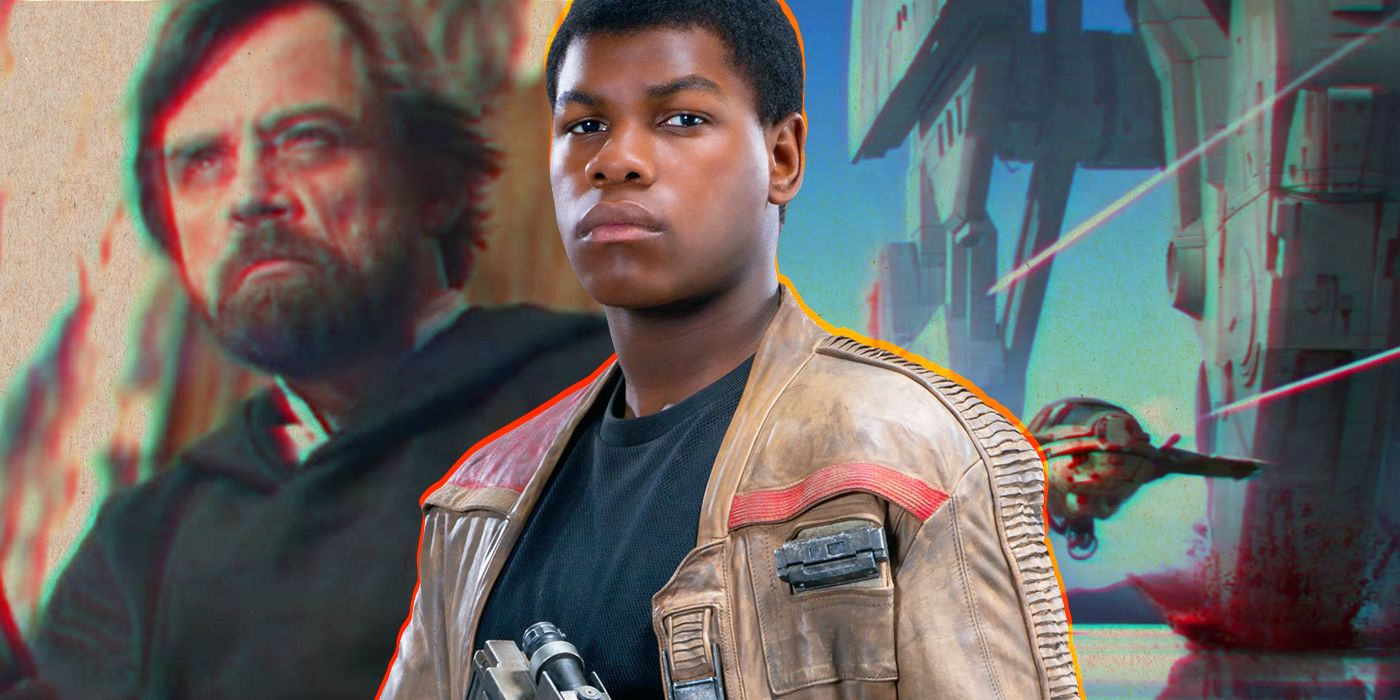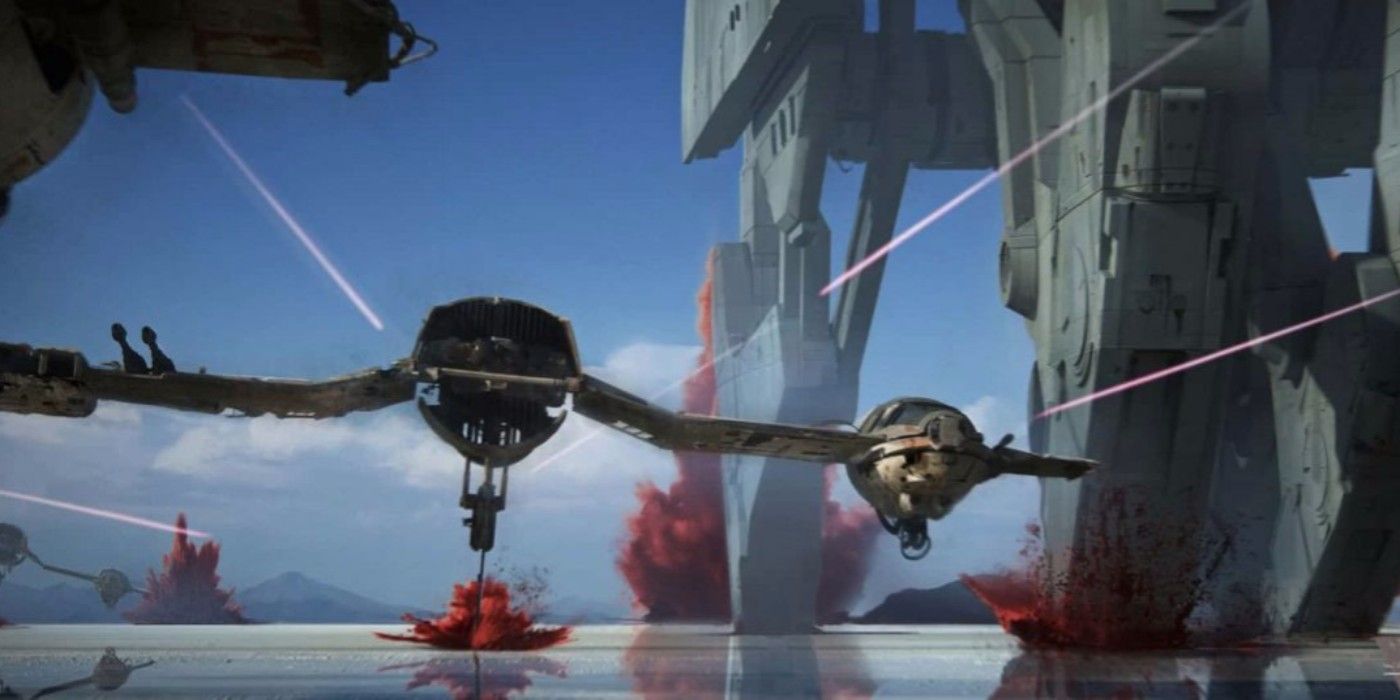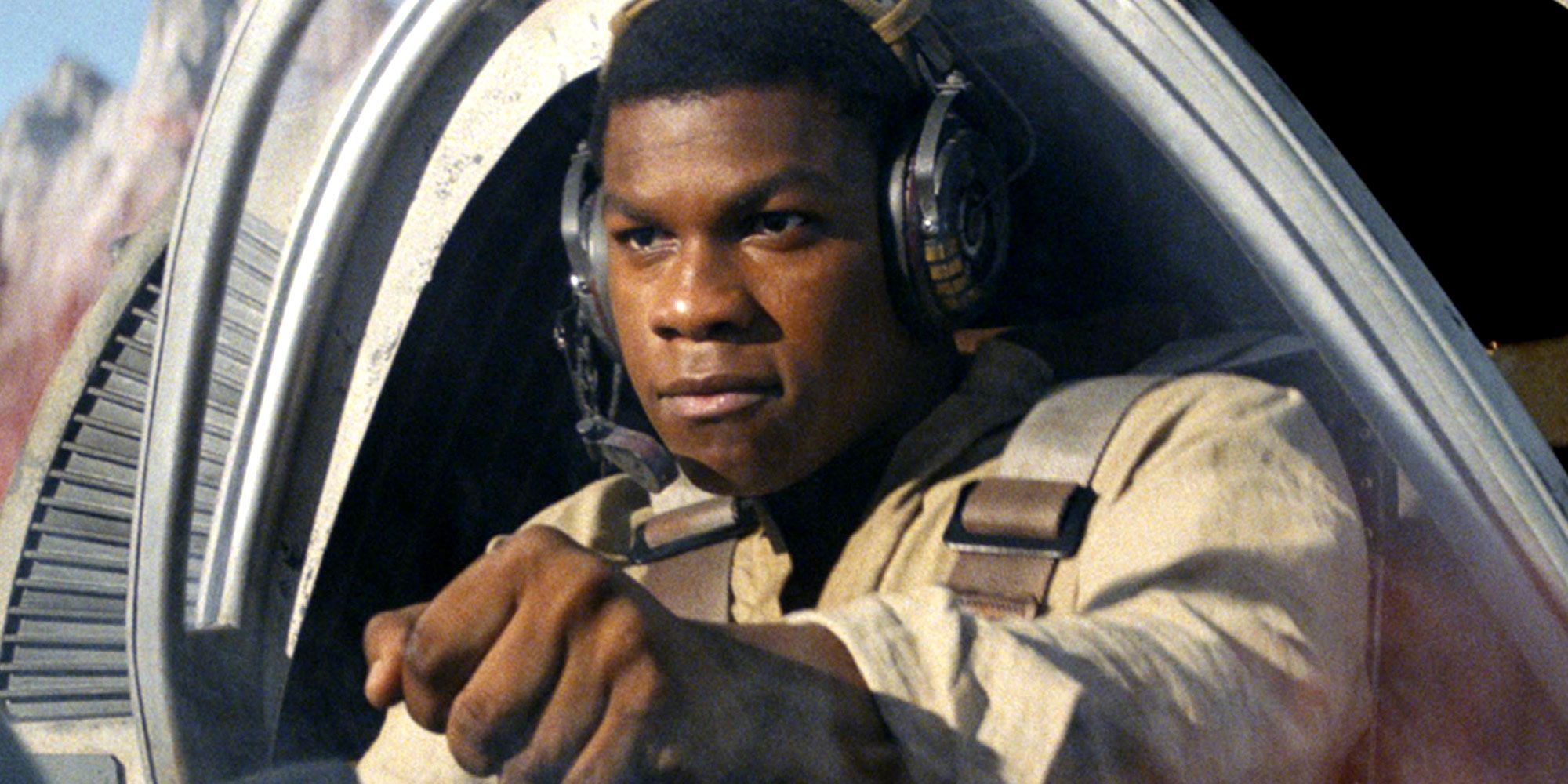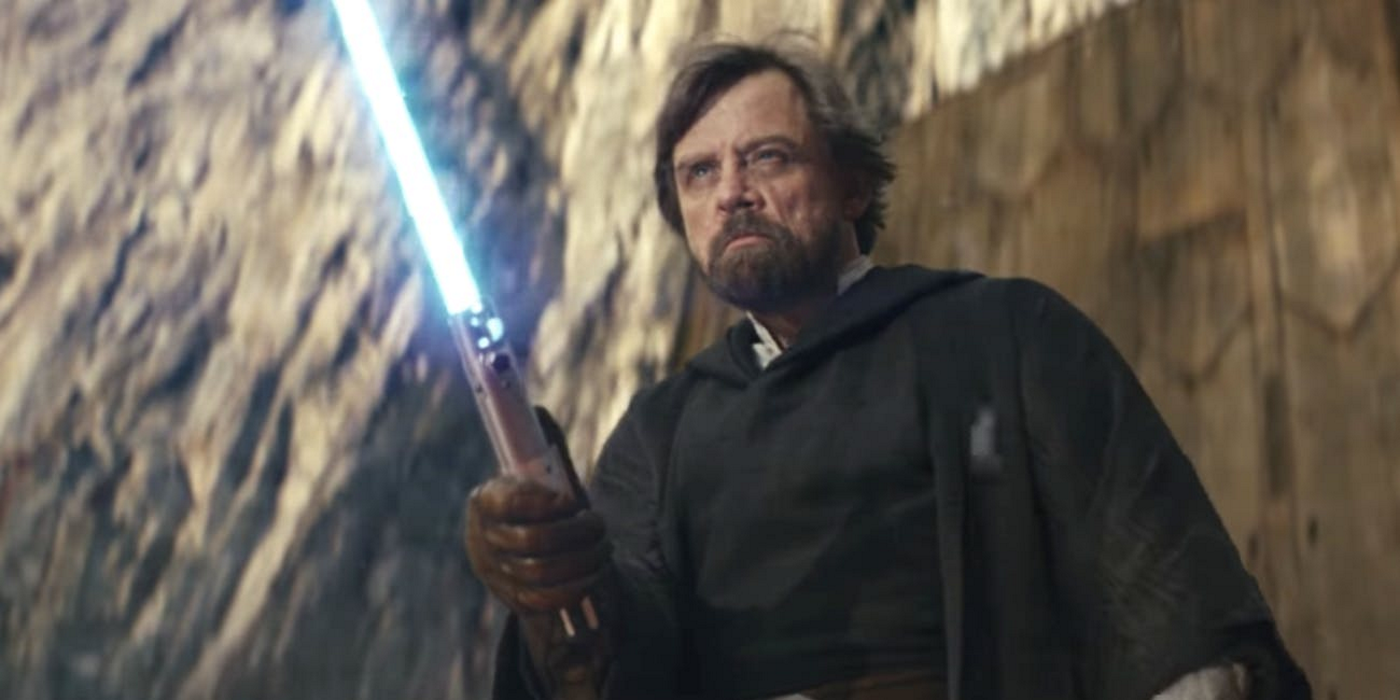Star Wars: The Last Jedi contains a less-obvious tribute to the famous Death Star battle scene from the original Star Wars. The Battle of Crait is undoubtedly one of the most beautifully shot sequences in the saga, regardless of fans' divided perspective on the film. While the white landscape invokes Hoth from The Empire Strikes Back almost immediately, the sequence itself draws inspiration from a very different Star Wars film: A New Hope.
Yes, many people draw immediate parallels between Luke's duel with Kylo Ren and Obi-Wan's duel with Darth Vader; both are teachers, confronting their former students in mostly symbolic battles that end in the teacher's demise. However, a more critical similarity is that between the Resistance's last stand against the forces of the First Order and the Rebellion's last stand against the Empire in the final act of the film. The Last Jedi draws parallels through its final battle between Luke Skywalker and Finn.
Rag-Tag Fighters, Charging Off Against a Super-Weapon
The finales of both A New Hope and The Last Jedi feature a bunch of heroes trying to stop a superweapon before it eradicates their entire base. In A New Hope, the X-Wings and Y-Wings try to stop the Death Star before it blows up Yavin-4. In The Last Jedi, Finn, Poe, Rose and the rest are piloting V-4x-D Ski Speeders, all of which are far more fragile than the X-Wing.
Victory involves striking a superweapon at its weak point — or, at least, seemingly the weak point. The Death Star is a superweapon with a deliberately built-in weakness, while the Superlaser siege cannon is stopped, supposedly, by Finn ramming straight through the snout of the machine. Ultimately the day is, in part, saved when the Millennium Falcon arrives to ward off the TIE Fighters defending the area.
While the AT-M6s are reminiscent of The Empire Strikes Back's AT-ATs in the Battle of Hoth, they are also reminiscent of the mounted cannons on the Death Star run that had to be bombed away, considering that the AT-M6s are mostly stationary artillery units that move slowly and fire.
Even lines of dialogue are similar between the two battles. Han says, when seeing the Rebellion gearing up to attack the Death Star, "attacking that battle station ain't my idea of courage. It's more like suicide." In a possibly deliberate call back, Poe tells Finn that his narrow charge toward attacking the Superlaser is "a suicide run." Both Wedge and Rose make comments about how large the superweapon is, and both Biggs and Poe tell Finn to pull out of the final charge, for the sake of them living.
The Key Differences Between Yavin-4 and Crait's Battles
The big difference is who wins the Battle of Yavin-4 and the Battle of Crait. The end of A New Hope is undeniably a Rebellion victory. The Death Star is obliterated, Grand Moff Tarkin is slain and the Empire's decade-spanning plot ends in failure. On top of that, the Rebellion, while it loses several pilots, ends up rebuilding under its victory and surviving on.
The Battle of Crait is a little less straightforward. It ends with Kylo Ren humiliated and the Resistance alive, but it's far from a victory. The legions are broken. Finn's final charge does not win — and arguably might never have won, despite Finn's confidence in his suicide run. The moral of Poe and Rose's arc showcases how it is better to fight responsibly and fight for the ones you love rather than get total victory. While this helps the Resistance survive, it stands in the direct face of A New Hope's blind-faith pursuit of total victory. It's less storybook and more realistic.
On top of that, while it's indicated that Finn is Force-sensitive come to the end of The Rise of Skywalker, at this point, the only advice he gets is to abort mission as he makes his final charge. The advice comes from Rose and Poe, telling him to "survive," which is in direct contrast to Obi-Wan's messages to Luke. Finn isn't told to "trust your feelings," but rather to not sacrifice himself in a tactic that might not even result in victory.
When the Force is used, it isn't used as a weapon against a super power, but in more passive, creative ways. For instance, Luke uses the Force to misdirect Kylo Ren and the First Order, and Rey uses it to free the Resistance forces from a cave by moving several rocks at once. This is less spectacular than bringing about the destruction of a superweapon, but far more successful at keeping the Resistance alive.
So, What Meaning Do We Derive From This?
Rian Johnson didn't create a battle that serves as the antithesis to the Battle of Yavin-4 for no reason — there is meaning in the difference between these two battles. The Battle of Crait is a battle that centers on survival. It redistributes the focus of heroics on several individuals, all of whom take an active role in the battle. The Battle of Yavin serves as a culmination of Luke's arc, and, to an extent, Han's arc. In contrast, the Battle of Crait features multiple character arcs coming to coming to a conclusion, all of which play into the film's climax. However, Finn's arc draws the most parallels to Luke's arc in the original, in that by the end of the film, he becomes the hero he needs to be.
While Finn has a less-prominent arc in this film, he still plays into the tropes that the hero is supposed to play into in Star Wars: self-sacrifice. And yet, his sacrifice would ultimately be in vain, even if he destroyed the superlaser. The Resistance would still be trapped. If Finn died here, he would've never been able to help subdue the Final Order's Star Destroyers in The Rise of Skywalker, or recruit the other former Stormtroopers for that battle.
From a tactical standpoint, Kylo Ren wins by the end of The Last Jedi. He's scored multiple victories against the Resistance. Luke Skywalker is dead. Kylo's now the Supreme Leader. But the fallen Jedi never feels satisfied with his victory, while the Resistance walks away, happy to still be alive. Kylo Ren fails only because he seeks total victory, refusing to be content unless he wins everything. However, because he stakes victory on a complete win, he can never be happy, while the Resistance's sole goal is to keep surviving and pursuing ultimate victory. For the Resistance, victory is a battle won through a thousand strokes, which is a far more realistic perspective than Kylo Ren's must-win-now mentality.
It serves as the ultimate subversion of Star Wars up until this point, where every films' battles turned the tide of their respective wars. The numerous battles in The Last Jedi are not the grand climaxes one hopes to find, but rather smaller victories that build up to a greater whole, creating countless heroes needed to save the world. Everyone's actions, no matter how small, can play into a happy ending.




